Links
The best of the extremaphiles: Tardigrade
Station Spacewalk Game = Awesome
An extremophile (from Latin extremus meaning "extreme" and Greek philiā (φιλία) meaning "love") is an organism that thrives in physically or geochemically extreme conditions that are detrimental to most life on Earth
Extraterrestrial Life?
No, scientists have not yet found life beyond Earth. This is a methane ice worm that burrows deep into methane ice in the Gulf of Mexico. How do you think studying organisms that live in extreme environments on Earth helps scientists search for life beyond Earth?
Conditions for Life on Earth
Life exists in nearly every environment on Earth. Some environments have conditions so extreme that humans cannot live in them. These places might have extreme temperatures, high salt levels, total darkness, or little water. Even though humans cannot live in these places, other organisms can.
Despite the extreme conditions in which some organisms live, all of Earth’s life-forms need the same basic things to survive: a source of energy, liquid water, and nourishment. Scientists have not yet found life anywhere else in the solar system. But by studying the conditions that support life on Earth, they are learning about conditions that might support life elsewhere. Astrobiology is the study of the origin, development, distribution, and future of life in the universe.
1. Key Concept Check What do organisms on Earth need to survive?
Energy from the Sun
The Sun is the source of almost all energy on Earth. Sunlight provides light and thermal energy. It also provides energy for plants, which are at the base of most food chains. However, a small percentage of organisms on Earth receive energy from chemicals or from Earth itself, such as the animals shown in Figure 1.
Figure 1 A variety of animals live in complete darkness near hot water jets in the ocean floor.
Protection by the Atmosphere
Earth’s moon receives about the same amount of sunlight as Earth. Yet conditions on the Moon are more extreme than they are on Earth. The Moon’s surface temperature can rise to 100°C during the day and drop to −150°C at night. Temperatures are extreme on the Moon because the Moon, unlike Earth, does not have an atmosphere.
Maintains Temperatures Earth’s atmosphere is like a blanket around Earth. It absorbs sunlight during the day and keeps heat from escaping into space during the night. It maintains Earth’s average surface temperature at a comfortable 14°C.
2.  Reading Check How is Earth’s atmosphere like a blanket?
Reading Check How is Earth’s atmosphere like a blanket?
 Reading Check How is Earth’s atmosphere like a blanket?
Reading Check How is Earth’s atmosphere like a blanket?
Absorbs Harmful Radiation Have you ever had a painful sunburn? Sunburns are caused by the Sun’s ultraviolet light. Even though you cannot see ultraviolet light, you can feel its effects. Too much ultraviolet light can harm you. Fortunately, Earth’s atmosphere absorbs most of the Sun’s ultraviolet light, as well as X-rays and other potentially harmful light from the Sun. The atmosphere also helps protect Earth from highly charged particles that erupt from the Sun in powerful storms.
Burns Up Meteoroids Earth’s atmosphere also protects Earth’s surface from meteoroids. Millions of meteoroids strike Earth’s atmosphere every day. But almost all of them burn up in the atmosphere before they can hit Earth’s surface.
Liquid Water
Liquid water is necessary for all life on Earth. Water dissolves minerals and transports molecules in cells. Without liquid water, cells could not function and life would not exist. Earth’s atmosphere keeps pressures and temperatures on Earth’s surface within a range where water can exist as a liquid.
Depending on temperature and pressure on Earth, water is solid, liquid, or gas, as shown in Figure 2. At sea level on Earth (1 atm of pressure), water is liquid between 0°C and 100°C. Above 100°C, water boils and becomes water vapor. Below 0°C, it freezes into ice. However, at different altitudes on Earth, such as on the top of a mountain, the boiling and freezing temperatures of water change slightly because the pressure in the atmosphere changes. Without Earth’s atmosphere, pressures on Earth’s surface would be too low for water to be liquid. Water would exist only as water vapor or ice.
3. Key Concept Check What would happen to water on Earth’s surface if Earth had no atmosphere?
Figure 2 Water changes from liquid into gas or into solid as temperatures and pressures change.
 Visual Check What happens to water when temperatures are high?
Visual Check What happens to water when temperatures are high?
Nourishment
Living things are nourished by nutrients they take from the air, water, and land around them. They use the nutrients for energy, growth, and other processes, such as reproduction and cellular repair. All molecules that provide nourishment for life on Earth contain carbon. They are organic molecules. Organic refers to a class of chemical compounds in living organisms that are based on carbon. Though it is possible that inorganic life could exist elsewhere, astrobiologists are most interested in places beyond Earth where water is liquid and carbon is plentiful.
WORD ORIGIN
astrobiology
from Greek astron, means “star”; Greek bios, means “life”; and Greek logia, means “study of”
from Greek astron, means “star”; Greek bios, means “life”; and Greek logia, means “study of”
SCIENCE USE V. COMMON USE
organic
Science Use relating to carbon compounds in living organisms
Science Use relating to carbon compounds in living organisms
Common Use relating to food grown without fertilizers, pesticides, or antibiotics
Looking for Life Elsewhere
In 1835, a New York newspaper published articles claiming that herds of bison and furry, winged bat-men had been observed on Earth’s moon. Many people were fooled. Today, people know the Moon is airless, and scientists have yet to find life there. Because liquid water is essential for life on Earth, scientists look for places in our solar system where liquid water might exist or might have existed in the past. In 2009, scientists discovered water on the Moon. Although water might not exist on the surface of a planet or a moon, it might exist beneath the surface.
Mars
Other than Earth, Mars is the planet scientists think is most likely to have liquid water. On the surface of Mars, pressures probably are too low for water to be liquid; water would likely evaporate quickly in the thin, dry atmosphere. Temperatures are also low. They generally range from −87°C to −5°C, though they can reach a high of 20°C during the Martian summer.
Scientists have sent many uncrewed spacecraft to Mars, but none has detected liquid water. However, there is abundant evidence for water vapor and water ice on the Martian surface. And photographs show surface features on Mars that appear to have been carved by moving water. The channels shown in Figure 3 look like streambeds. It is possible that water from an underground ocean seeped to the surface and flowed as rivers or floods before evaporating. How much water was in these channels and how long ago it flowed are still unknown.
1. Key Concept Check Why do scientists think liquid water once might have existed on Mars?
Figure 3 Scientists hypothesize that these Martian channels could be ancient streambeds.
Other Planets
Mercury and Venus are too hot for water to be liquid on or near their surfaces. The four outer planets are too cold. The outer planets also are too gaseous. They have no solid surfaces on which liquid water could form. Though some liquid water might exist deep in the interiors of the outer planets, it is unlikely that the water could support life.
Natural Satellites
Scientists continue to look for further evidence of water on Earth’s moon and on the moons of other planets. Even though temperatures in the outer solar system are extremely cold, scientists have found that as a satellite orbits a massive planet, the planet’s gravity can cause the satellite’s interior to heat. This might provide enough thermal energy to allow liquid water to exist near their icy surfaces.
Several moons in the outer solar system have surface features that indicate the presence of liquid water not far below. For example, scientists suggest that the ridges on Europa (yuh ROH puh), one of Jupiter’s moons, shown in Figure 4, could be cracks in the ice where liquid water has seeped to the surface and frozen solid. Callisto and Ganymede, two other moons of Jupiter, and Titan, a moon of Saturn, show similar surface features.
Several other moons in the outer solar system, including Enceladus (en SEL uh dus), a moon of Saturn, and Triton, a moon of Neptune, show evidence of geysers (GI zurz). A geyser is a warm spring that sometimes ejects a jet of liquid water or water vapor into the air. The massive geysers on Enceladus shown in Figure 5 are hundreds of kilometers high. Two other moons of Saturn, Tethys (TEE thus) and Dione (di OH nee), also have geyserlike plumes.
2. Key Concept Check Where might life exist in the solar system beyond Earth?
Figure 4 The lines on Europa might be cracks where liquid water has risen to the surface.
Figure 5 Geysers on Enceladus are evidence that liquid water might exist beneath the moon’s icy surface.
Lesson Review
Visual Summary
Most—but not all—life on Earth receives energy from the Sun.
Features on Mars that look like streambeds might be evidence that liquid water once existed on the surface.
Oceans of liquid water might be below the surface of some moons in the outer solar system.
Lesson Assessment
Use Vocabulary
1. Define astrobiology in your own words.
2. Organisms on Earth use nutrients that contain __________ molecules.
3. Which do scientists think is most likely to support life?
A. Jupiter
B. Earth’s moon
C. Mars
D. Venus
4. Explain why scientists follow the water when looking for life in the solar system.
5. Construct a diagram of the solar system. Identify objects where life might exist.
6. Which is NOT a good place to look for life?
A. Enceladus
B. Europa
C. Mars
D. Venus
7. Which is critical for all life on Earth?
A. average temperatures above 0°C
B. energy from the Sun
C. liquid water
D. oxygen to breathe
8. Analyze The feature indicated by the arrow exists on some moons. How is it evidence of liquid water?
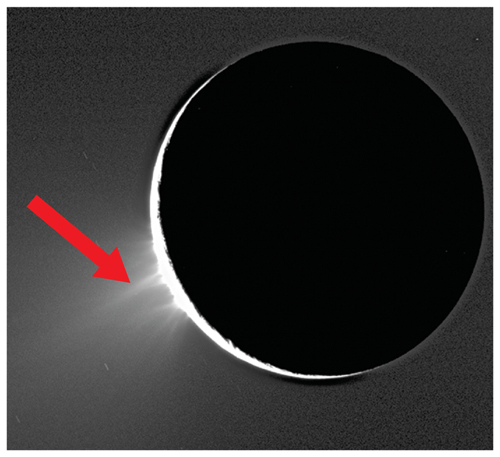
NASA/JPL/Space Science Institute
9. Summarize Copy and fill in the graphic organizer below to summarize the conditions necessary for life on Earth.

10. Evaluate How does the study of life on Earth help scientists look for life elsewhere in the solar system?
11. How do scientists use their understanding of life on Earth in their search for evidence that life has existed, or does exist, on Mars or on other objects in the solar system?
12. How and where do scientists look for life in the solar system?
Finding the Mean
13. What is the mean of the following temperatures taken at a single location on Mars’s surface over four days: −25.4°C, −24.7°C, −28.1°C, and −28.7°C?
The table below shows temperature data gathered by a Mars lander over a 24-h period. Use the table to answer the questions.
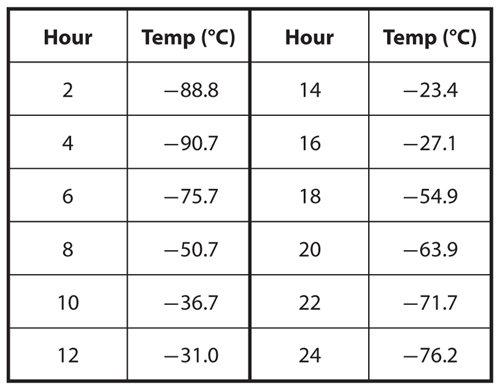
14. What was the mean temperature from hour 2 through hour 6?
15. What was the mean temperature for the first 12 hours?
16. What was the mean temperature over the 24-h period?

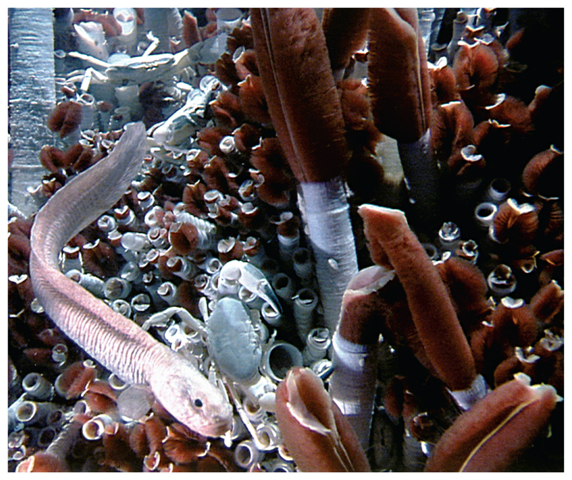
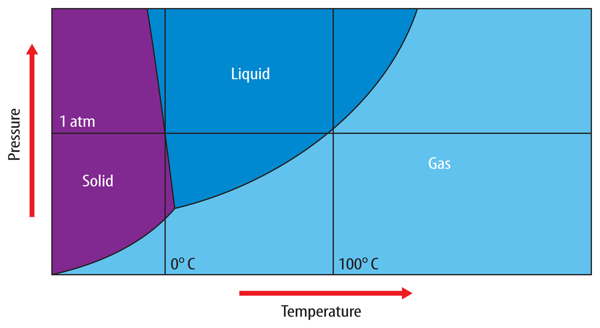
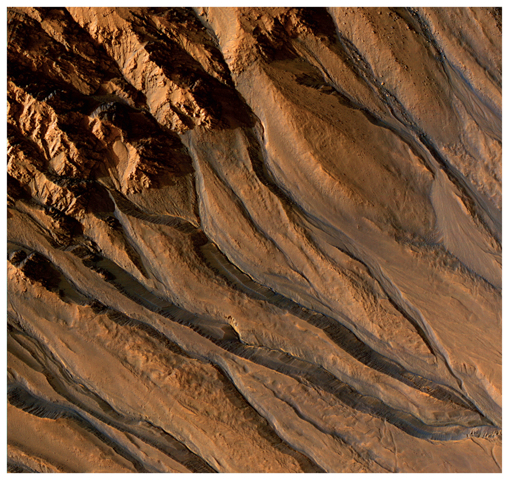
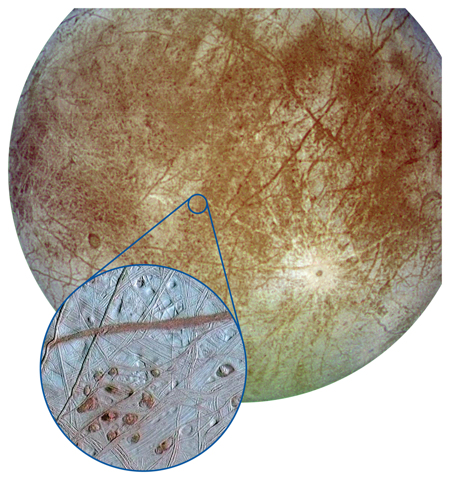
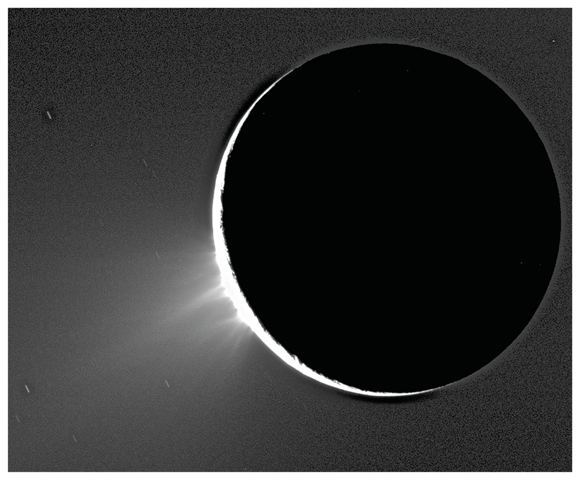
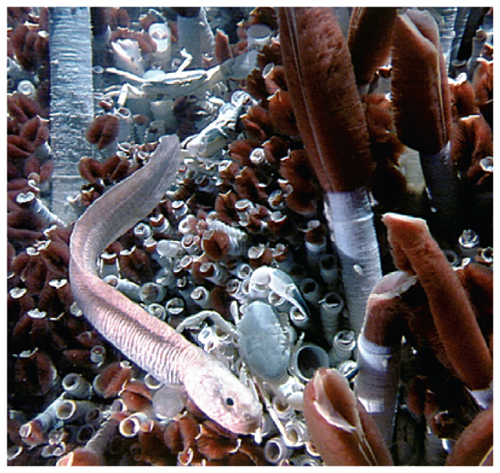
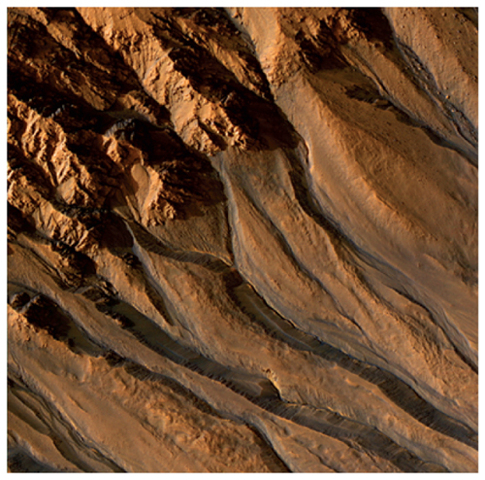
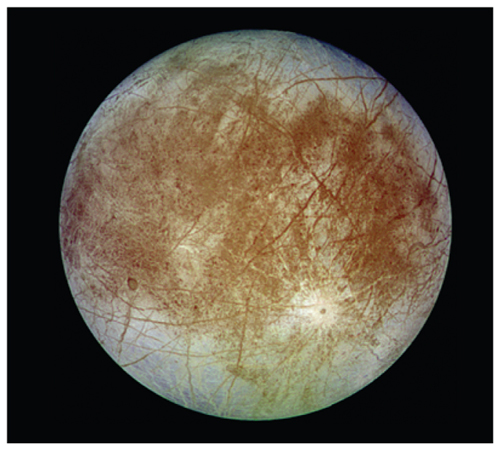
No comments:
Post a Comment